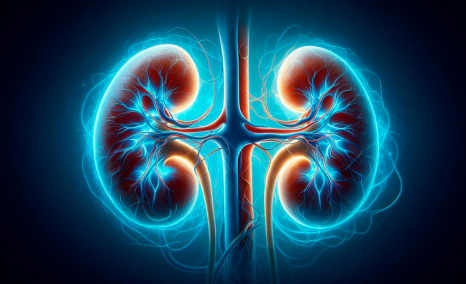Beyond Supportive Care: How New Drugs are Shaping Metabolic-associated Steatohepatitis (MASH) Treatment Outcomes
Feb 14, 2025
Table of Contents
Metabolic-associated Steatohepatitis (MASH), previously known as Non-alcoholic Steatohepatitis (NASH), is a progressive liver condition characterized by fat buildup, inflammation, and liver cell damage. With rising rates of obesity, diabetes, and metabolic syndrome worldwide, MASH is becoming a major public health concern, often leading to fibrosis, cirrhosis, and even liver cancer. Unlike other liver diseases, MASH results from metabolic dysfunction rather than alcohol intake, making it a distinct target for therapeutic innovation.
Nonalcoholic Steatohepatitis (NASH) was officially renamed to Metabolic Dysfunction-Associated Steatohepatitis (MASH) in 2023 by leading liver disease authorities, including the American Association for the Study of Liver Diseases (AASLD) and the European Association for the Study of the Liver (EASL), to reflect its metabolic origins better. For the latest insights, check out our updated MASH Market Report
Downloads
Article in PDF
Recent Articles
- Bristol Myers Squibb’ Karuna Therapeutics Buyout; Orchard Therapeutics’ Lenmeldy FDA Approval; Ma...
- FDA’s No to Intercept’s NASH Drug; Roche’s Phesgo gets approval; Gilead’s Remdesivir pricing
- AZ announces positive results for durvalumab and tremelimumab; FDA nods to extend LILETTA’s use t...
- Zealand Pharma’s Phase III Results of Glepaglutide; FDA Approves Amylyx’s ALS Drug Relyvrio; Novo...
- Nonalcoholic Steatohepatitis Treatment Market: Which Pipeline Therapy Will Steal the Spotlight?
According to DelveInsight’s estimates, in 2023, the prevalence of MASH was significant, with an estimated 15.6 million diagnosed prevalent cases across the seven major markets (7MM), which include the United States, EU4 (Germany, France, Italy, and Spain), the United Kingdom, and Japan.
The tipping point: How REZDIFFRA’s approval is redefining MASH treatment
The MASH treatment landscape has long been challenging due to its complex pathology. Driven by metabolic imbalances, MASH causes liver inflammation, fat buildup, and cellular damage, progressing to fibrosis, cirrhosis, or liver cancer. Despite the rising prevalence, effective therapies have been elusive—until recent breakthroughs emerged.
In 2024, a beacon of hope emerged with the FDA’s approval of REZDIFFRA (Resmetirom), a Thyroid Hormone Receptor Beta (THRβ) agonist, marking a groundbreaking advancement as the first approved drug specifically for MASH treatment. Resmetirom offers an innovative therapeutic approach by addressing liver pathophysiology through the activation of thyroid hormone receptor-beta (THRβ). Its targeted approach has opened new possibilities, moving beyond symptom management to potentially resolving core metabolic dysfunctions. This approval sets a new standard for future MASH treatments, highlighting the potential of THRβ agonists to meet rigorous regulatory requirements and deliver meaningful results for patients long left without effective options.
Want the full scoop on REZDIFFRA’s rise? Check out our blog at REZDIFFRA’s Trailblazing Journey in MASH Treatment
In January 2025, Madrigal Pharmaceuticals participated in the J.P. Morgan Healthcare Conference, showcasing the performance of its drug thus far and outlining the company’s goals for 2025. The company reported fourth-quarter REZDIFFRA revenues exceeding USD 100 million, contributing to total earnings of approximately USD 180 million from the drug in 2024. By the end of 2024, more than 11,800 patients were using REZDIFFRA. Looking ahead, Madrigal plans to expand into the European market in the second half of 2025 and is awaiting results from its MAESTRO-NASH OUTCOMES trial, which focuses on REZDIFFRA in compensated cirrhosis. Madrigal’s continued success with REZDIFFRA positions the company for significant growth, with European expansion and trial results offering exciting prospects for 2025 and beyond.
The rise of innovative therapies: Transforming MASH treatment
The treatment landscape for MASH is witnessing significant growth in emerging therapies. With advancements in targeting precise molecular pathways and enhancing patient outcomes, the treatment paradigm is anticipated to shift considerably in the coming years.
The leading drug class under investigation is THR-β agonists, designed to enhance lipid metabolism and reduce liver fat. FGF and PPAR modulators address fibrosis and lipid dysregulation, respectively, while GLP-1 receptor agonists, primarily used in diabetes, show promise in reducing liver fat and inflammation. On the other hand, FXR agonists work by activating the Farnesoid X Receptor (FXR) to improve bile acid regulation and reduce inflammation. Additionally, newer classes like FASN inhibitors, CCR5 antagonists, and FFAR4 agonists target unique pathways related to lipid synthesis, immune response, and fatty acid regulation. Together, these agents represent a promising arsenal to combat MASH’s complex pathology and improve patient outcomes.
Alongside targeted drug classes for MASH, a range of emerging therapies with distinct mechanisms of action outside the primary drug categories is also being investigated. These include PXL065, a non-genomic TZD; LPCN 1144, an androgen receptor modulator; and Rencofilstat, a cyclophilin inhibitor. Belapectin (a Gal-3 inhibitor) and Miricorilant (a glucocorticoid receptor antagonist) address inflammation and fibrosis, while agents like ION224 and Ervogastat inhibit DGAT2. Cilofexor and firsocostat combine GLP-1 agonism with FASN inhibition, offering a multifaceted approach. Together, these drugs expand the treatment landscape, targeting MASH’s complex pathology from multiple therapeutic angles.
These treatments aim to address not only MASH but also specific stages of fibrosis, targeting distinct patient populations. A notable aspect is the range of innovative mechanisms of action (MoAs) adopted in various drug classes, highlighting the multifaceted nature of liver disease progression and treatment.
The THR-β agonist VK2809 from Viking Therapeutics is emerging as a game-changer in MASH treatment, supported by groundbreaking clinical results. As part of the highest revenue-generating drug class in MASH, according to DelveInsight, VK2809 demonstrates exceptional potential. At the 75th Liver Meeting 2024, Viking shared final Phase IIb VOYAGE trial data. Patients on VK2809 showed significant liver fat reductions by Week 12, sustained through Week 52, with mean reductions of 37% to 55%. The response rate (≥30% fat reduction) ranged from 64% to 88%, outperforming placebo. VK2809 also achieved NASH resolution in 63% to 75% of patients without worsening fibrosis, compared to 29% for placebo (p < 0.05). Across all treatment groups, 69% reached NASH resolution (p < 0.0001 vs. placebo). With a US launch anticipated for 2027, VK2809 underscores the transformative role of THR-β agonists in MASH therapy.
FGF modulators, another potent therapeutic class, hold significant promise, especially given their ability to stimulate Fibroblast Growth Factor 21 (FGF21), a key player in metabolic regulation. BIO89-100, also known as Pegozafermin, developed by 89bio, is one of the front-runners within this class. Notably, Pegozafermin has shown potential for addressing both pre-cirrhotic and cirrhotic conditions in MASH patients and is expected to reach the market by 2026 for pre-cirrhotic cases and by 2027 for cirrhotic ones. Another FGF modulator, Efruxifermin by Akero Therapeutics, also targets multiple stages of fibrosis.
Likewise, the FXR agonists, such as HPG1860 developed by Hepagene (Shanghai), focus on activating the FXR to exert anti-inflammatory and anti-fibrotic effects. This class is currently advancing through clinical trials, with an anticipated market entry date of 2027 in the United States.
While these therapies showcase potential, the complexity of liver diseases like MASH demands a multifaceted approach. Consequently, emerging therapies are not limited to a single MoA or patient segment but span a variety of targets and administration routes. PPAR modulators, for instance, such as Lanifibranor, cater to patients with both MASH and type 2 diabetes mellitus. Lanifibranor, an oral PPAR agonist, is in Phase III trials. This drug leverages the peroxisome Proliferator-activated Receptor (PPAR) pathway to regulate lipid metabolism, a core aspect of MASH pathology, which is particularly relevant for patients with concurrent metabolic disorders.
GLP-1 receptor agonists, like Novo Nordisk’s Semaglutide, and dual-acting agents such as Boehringer Ingelheim’s Survodutide, are gaining recognition as pivotal drug classes in MASH treatment. These therapies not only address liver-specific metabolic dysfunctions but also offer systemic benefits, tackling broader metabolic issues.
Semaglutide is driving attention in the MASH treatment landscape with its dual administration options—oral and subcutaneous—enhancing its appeal for managing Type 2 diabetes and aiding weight loss. It has demonstrated potential in reducing biomarkers like ALT and hsCRP, signaling its efficacy in addressing metabolic dysfunctions linked to MASH. The FDA’s Breakthrough Therapy Designation, supported by positive Phase II trial outcomes in non-cirrhotic patients (F1–F3), underscores its promise. However, its effectiveness in MASH-related cirrhosis (F4) remains unclear. With 34 active patents ensuring protection until at least 2032 and an anticipated US approval by 2028, semaglutide is well-positioned to achieve significant market penetration. This drug exemplifies the industry’s shift towards therapies with dual or multi-mechanism approaches, providing comprehensive solutions for complex diseases like MASH.
On the horizon are therapies with innovative targets, such as FASN inhibitors like Sagimet Biosciences’ Denifanstat and CCR5 antagonists like Leronlimab from CytoDyn. These drugs focus on unique pathways involved in liver inflammation and fibrosis, reflecting the expanding scope of research in liver disease treatment. FFAR4 agonists, another emerging class, are also gaining attention, with NorthSea Therapeutics’ Icosabutate targeting fatty acid receptors to reduce liver inflammation and fibrosis.
Tailored combinations: The new era in MASH care
The trend in emerging therapies aligns with a paradigm shift toward personalized medicine, where specific fibrosis stages and disease phenotypes are targeted with tailored therapeutic approaches. In the coming years, we can expect continued refinement in patient stratification, enabling healthcare providers to better match patients with therapies based on fibrosis stage and molecular profile. For example, while FXR agonists and THR-β agonists may be more effective in patients with less severe fibrosis, advanced FGF modulators and combination therapies may play a critical role in managing later stages, including cirrhosis.
Looking ahead, some key players in the MASH therapeutic market are exploring combination therapies that could offer synergistic effects by targeting multiple pathways concurrently. For instance, Gilead Sciences and Novo Nordisk are investigating a combination of cilofexor, firsocostat, and semaglutide, targeting FXR, GLP-1, and JAK1 pathways. This combination therapy approach is particularly promising for treating patients with advanced fibrosis, where monotherapies have shown limited efficacy.
Which emerging drugs will dominate the future of MASH treatment?
Among the highly anticipated therapies set to launch by 2027, Inventiva Pharma’s Lanifibranor is expected to take the largest share of the market, with analysts forecasting it as the top choice due to its comprehensive approach to addressing MASH. Akero Therapeutics’ Efruxifermin is likely to follow closely as the second-largest contributor, offering versatility across different stages of MASH, which may boost its adoption. Viking Therapeutics’ VK2809 rounds out the top three emerging treatments, with its targeted approach anticipated to make it a valuable option for early-stage patients. Together, these therapies are set to reshape the MASH landscape, expanding treatment options and addressing the complex needs of patients across various stages of disease progression.
Find out which late-stage MASH drug will challenge REZDIFFRA’s supremacy
MASH market forecast: A billion-dollar opportunity in the making
According to DelveInsight’s “Metabolic Dysfunction-Associated Steatohepatitis Market Forecast Report”, the therapeutic market in 2023 was estimated to be USD 2 billion. Still, this figure is projected to swell significantly as emerging classes of drugs gain approval and are adopted in clinical practice. By 2034, revenue for MASH treatments in the 7MM (the United States, Germany, France, Italy, and Spain, the United Kingdom, and Japan) is expected to increase, driven largely by the adoption of novel drug classes like THR-β agonists, FGF modulators, and PPAR modulators. Among these, THR-β agonists are expected to capture the largest share, while FGF modulators and PPAR modulators are also projected to generate significant revenue, respectively.
Is the future of MASH treatment on the brink of transformation?
Ultimately, the future of liver disease treatment is set to be one of incremental innovation and strategic advancements in drug design. Companies are not only focusing on bringing these therapies to market but also on demonstrating long-term efficacy and safety. As more data emerges from ongoing Phase II and III clinical trials, it is expected that healthcare providers and patients alike will benefit from a broader range of therapeutic options.
This landscape of emerging MASH therapies illustrates the pharmaceutical industry’s commitment to addressing the global burden of liver diseases. Through continued innovation, it is anticipated that novel therapies will gradually replace supportive care as the standard of care, setting new benchmarks for efficacy, safety, and patient-centered outcomes. The journey to market for these drugs underscores the importance of robust clinical evidence and regulatory alignment, as well as the potential for significant financial returns for companies willing to invest in this challenging yet promising therapeutic area.
As the market for MASH therapies evolves, ongoing monitoring of clinical and regulatory developments will be essential for stakeholders, including investors, healthcare providers, and patients. With promising pipelines and favorable market projections, the future of liver disease treatment is poised for a transformative shift, moving from palliative care to targeted therapies that address the root causes of disease progression. This shift is not only a testament to scientific progress but also a beacon of hope for millions of patients worldwide.

Downloads
Article in PDF
Recent Articles
- 6 Promising Late-stage NASH Drugs to Challenge REZDIFFRA’s Supremacy
- Empowering Change: REZDIFFRA’s Trailblazing Journey in NASH Treatment
- Madrigal’s Rezdiffra Breakthrough Transforms NASH Treatment, Leading the Way for Next-Gen Therapies
- NASH Emerging Therapies: The Path Forward
- AstraZeneca’s Danicopan Trial; CHMP Recommends Sanofi/AstraZeneca’s nirsevimab; Akero’s NASH Drug...



